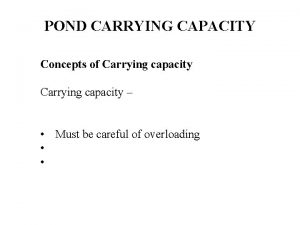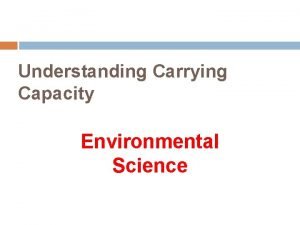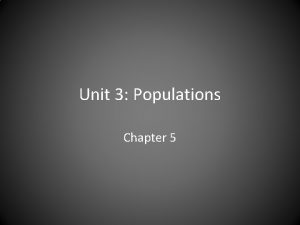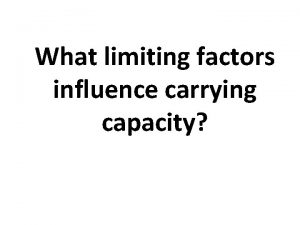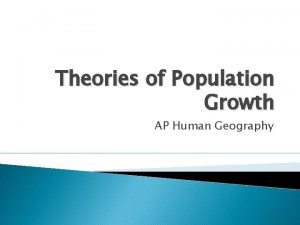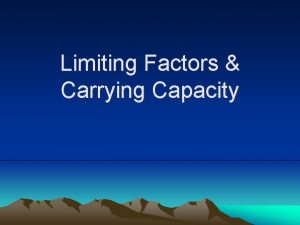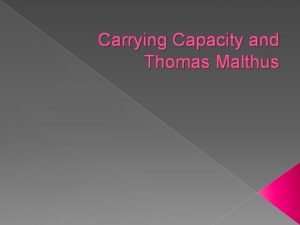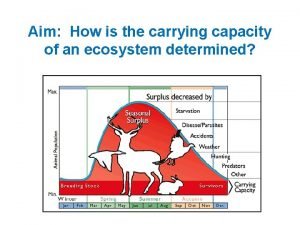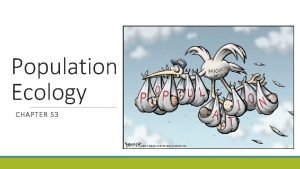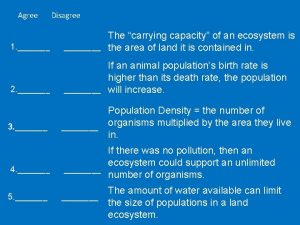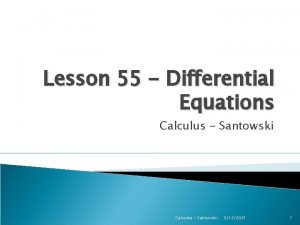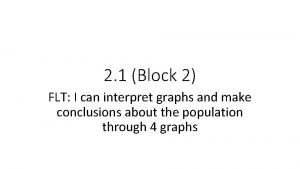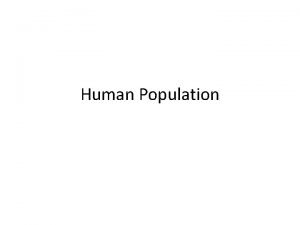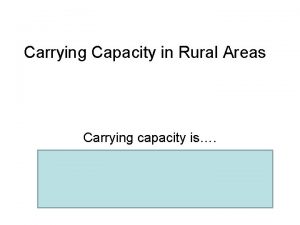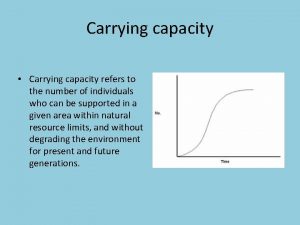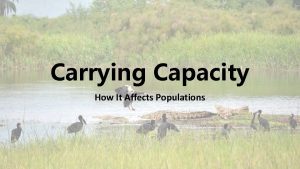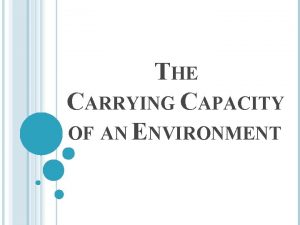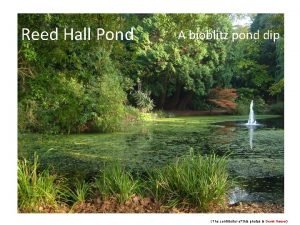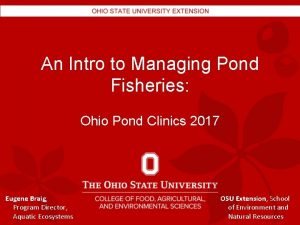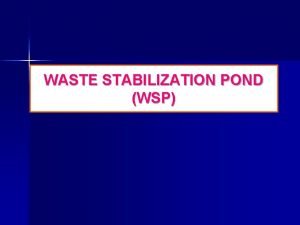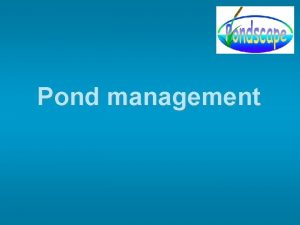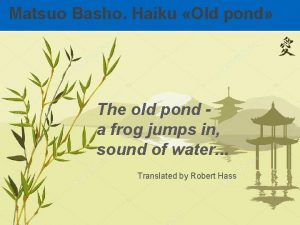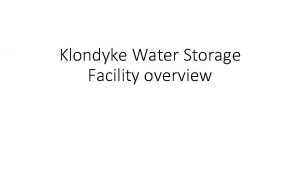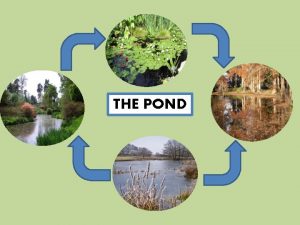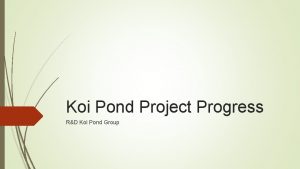POND CARRYING CAPACITY Concepts of Carrying capacity Must

















- Slides: 17

POND CARRYING CAPACITY Concepts of Carrying capacity – • Must be careful of overloading • •

POND CARRYING CAPACITY Concepts of Carrying capacity • Flow index: • Density Index:

POND CARRYING CAPACITY Concepts: 1. Density 2. Oxygen 3. Ammonia 4. Suspended solids Factors

POND CARRYING CAPACITY Data needed: 1. Physical parameters • • • Pond dimensions Water use Elevation above sea level Daily mean water temperature Water inflow rates

POND CARRYING CAPACITY 2. Chemical parameters: 3. Water discharge permit specifications: • ammonia • Solids • • • phosphate

POND CARRYING CAPACITY 4. Feed quality • metabolizeable energy (kcal/kg) • • Density Carrying Capacity (spatial requirements) Wden = V*Di Wden: Biomass (kg) per unit length (cm) Di: Density index (kg/cm/m 3)

POND CARRYING CAPACITY Species RBT Steelhead Chinook salmon Coho salmon Atlantic salmon kg/cm/m 3 3. 0 1. 5 1. 8 2. 4 1. 8

POND CARRYING CAPACITY Density-based permissible biomass in the rearing unit Bio = Wden*L Bio: permissible biomass (kg) Wden: biomass per unit body length (kg/cm)

POND CARRYING CAPACITY Oxygen carrying capacity Single-pass system W = F*L*I W: permissible biomass F: flow index (see table) L: length I: water inflow F value:

POND CARRYING CAPACITY Multiple-pass system (w/o aeration) Increases potential of fish health problems: • • accumulation of waste products • Reduction in DO available • Dependent on fall ht, water temp, elev. , etc. • Simple method - Life support index (from tables 14/15) should be reduced by 25% for first use and 30% for additional ponds

POND CARRYING CAPACITY Multiple-pass system (with aeration) • Pumped air or pure O 2 • Treat as single-pass (be careful) • Risk of nitrogen supersaturation (acute >110%, chronic 102%) • Water quality

POND CARRYING CAPACITY Circulating water systems - Similar concepts, but lower water flows - Generally need supplemental aeration - May remove dependency of fish on DO

POND CARRYING CAPACITY Ammonia carrying capacity - Ammonia in unionized form (NH 3) is harmful - End-product of protein metabolism Single-pass – Multiple-pass – may exceed limit of 0. 03 - Accumulation with each reuse of water - Must reduce feeding rate

POND CARRYING CAPACITY Circulating systems - Accumulation due to increases water retention time - Recirculating systems -

POND CARRYING CAPACITY Suspended solids carrying capacity – no reliable method to calculate Depends on: 1. Digestibility of feed (FCR) 2. Feeding techniques If solids accumulate – fish health problems

POND CARRYING CAPACITY Application of CC: Stock pond for “take-out” - number of fish (plus mortality) that are to be removed at a specified time 1. Establish date 2. 3. Calculate temp. -based daily growth rate (table 4) 4. 5. 6. Nat. mortality (0. 02 -0. 03% per day) 7.

PRODUCT DEFINITION Product potential/planning The 5 W’s: 1. 2. 3. 4. 5. Who What Where When Why
 Carrying capacity of pond
Carrying capacity of pond Outline four fish nursery management practices
Outline four fish nursery management practices Carrying capacity environmental science
Carrying capacity environmental science Relationship between population and carrying capacity
Relationship between population and carrying capacity Carrying capacity
Carrying capacity Boxns wagon dimensions
Boxns wagon dimensions Limiting factors examples
Limiting factors examples Demographic transition model ap human geography
Demographic transition model ap human geography Whats carrying capacity
Whats carrying capacity Thomas malthus carrying capacity
Thomas malthus carrying capacity What is the carrying capacity (approx.)?
What is the carrying capacity (approx.)? Carrying capacity example
Carrying capacity example Carrying capacity
Carrying capacity Carrying capacity exponential growth
Carrying capacity exponential growth Differential calculus
Differential calculus Exponential growth and carrying capacity
Exponential growth and carrying capacity Carrying capacity population
Carrying capacity population Carrying capacity
Carrying capacity
